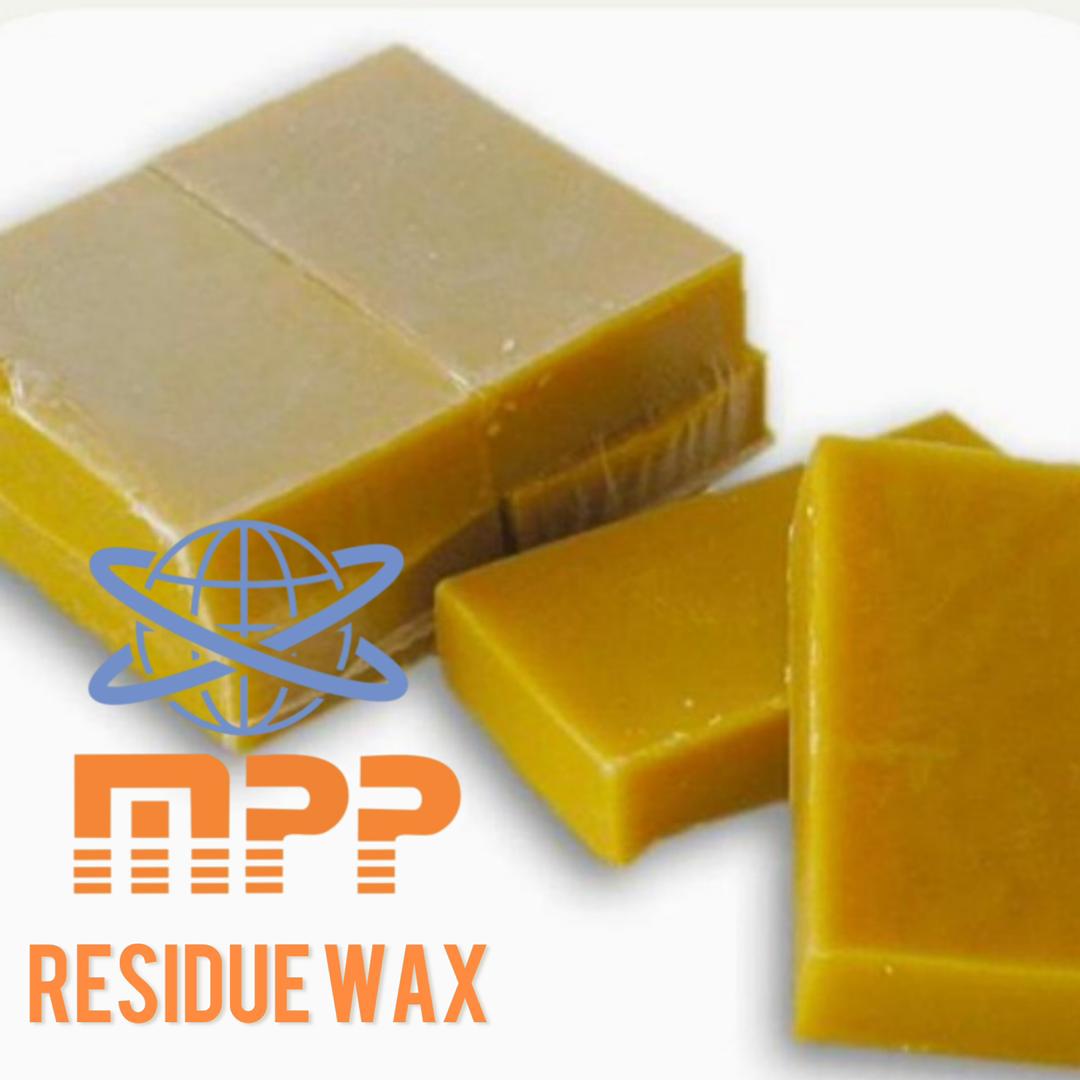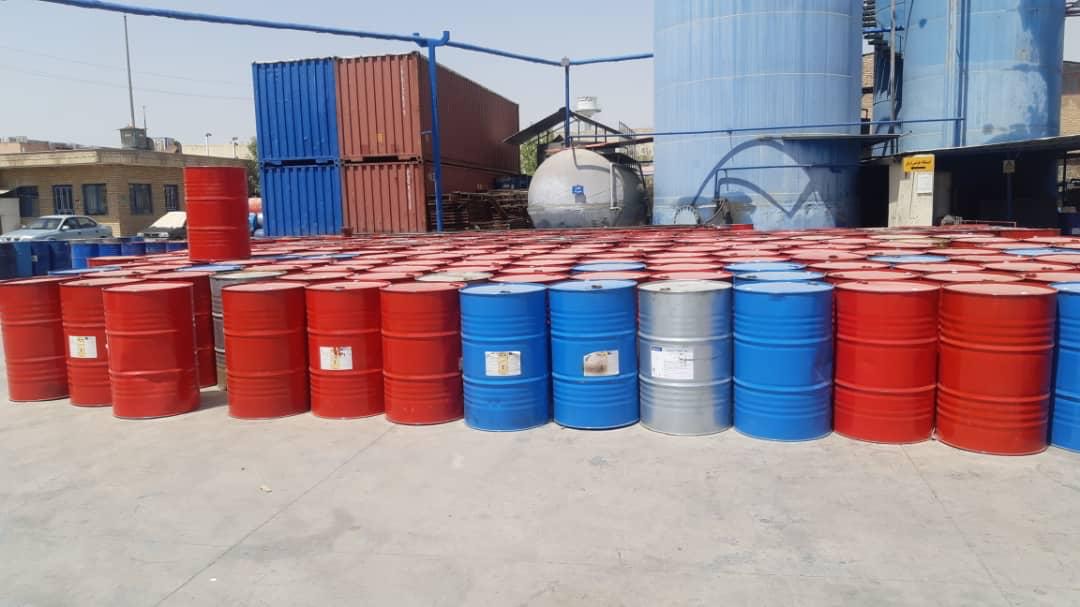
What is Residue Wax ?
Residue wax, also known as foots oil or slack wax, is a by-product of the petroleum refining process. It is a mixture of hydrocarbons that are extracted from the slack wax after it has been dewaxed.
During the refining process, crude oil is subjected to various processes to remove impurities, including waxes. The waxes are removed by cooling the crude oil to a temperature where the wax crystallizes and can be filtered out. The resulting wax-free oil is then further processed to produce various petroleum products such as gasoline, diesel, and lubricating oils.
The wax that is removed from the crude oil is called slack wax, and it contains a mixture of paraffin wax, microcrystalline wax, and other impurities. The slack wax is then processed to remove the impurities, leaving behind a residue wax that has a higher melting point than the original slack wax.
Residue wax is commonly used in the manufacture of candles, crayons, polishes, and other products that require a high melting point wax. It is also used as a lubricant in various industries, including rubber manufacturing, paper production, and textile processing.
Application of Residue wax
Residue wax is generally used in the industries of rubber, matchmaking, shoe wax, waterproof cable, which has a good market for export to India, Pakistan, Turkey, and Africa, as well as domestic markets.
Quality of Residue Wax
The quality of residue wax can vary depending on the source of the crude oil and the refining process used. However, in general, high-quality residue wax should have the following characteristics:
Color: High-quality residue wax should have a light color, indicating that it has been well-refined and contains fewer impurities.
Melting point: The melting point of residue wax should be within a specific range, depending on the intended use. It should be consistent and predictable to ensure consistent performance in various applications.
Consistency: The consistency of residue wax should be uniform and free from lumps or any foreign matter.
Odor: Residue wax should have a mild or neutral odor, indicating that it has been well-refined and contains fewer impurities.
Chemical composition: Residue wax should be composed primarily of saturated hydrocarbons and contain minimal amounts of unsaturated hydrocarbons and other impurities.
Shelf life: High-quality residue wax should have a long shelf life, indicating that it is stable and will not degrade or spoil over time.
In summary, high-quality residue wax should have a light color, consistent melting point, uniform consistency, mild or neutral odor, high purity, and a long shelf life. These characteristics ensure that residue wax is suitable for use in a variety of applications, including candles, polishes, and lubricants.
History of Residue Wax
Residue wax, also known as slack wax or foots oil, has been a byproduct of the petroleum refining process since the early 1900s. In the early days of petroleum refining, waxes were considered a nuisance and were often discarded as waste products. However, in the early 1900s, researchers discovered that waxes had several valuable properties, including their ability to act as lubricants and protectants in a wide range of applications.
Initially, the refining process used to produce residue wax was relatively crude, and the resulting wax was of relatively low quality. However, in the 1930s and 1940s, significant advances were made in the refining process, allowing for the production of higher-quality waxes.
During World War II, the demand for waxes increased significantly as they were used in the production of munitions, as well as other military applications. After the war, the demand for waxes continued to increase as new applications were discovered, including candles, crayons, and polishes.
Today, residue wax is produced in refineries around the world and is used in a wide range of applications, including candles, polishes, lubricants, and coatings. The refining process has continued to evolve, with new technologies allowing for the production of even higher-quality waxes.
Usages of Residue Wax
Residue wax, also known as slack wax or foots oil, has several applications across various industries due to its unique properties. Some of the common uses of residue wax are:
Candle making: Residue wax is used in the production of candles due to its high melting point and ability to hold fragrance and color.
Polishes and coatings: Residue wax is used as an ingredient in polishes and coatings to provide a protective layer, shine, and water resistance.
Cosmetics: Residue wax is used in the production of cosmetics such as lip balms, lipsticks, and lotions as an emollient, providing moisturization and protection to the skin.
Rubber and tire industry: Residue wax is used as a processing aid in the rubber and tire industry, providing lubrication and reducing the adhesion between rubber and the processing equipment.
Textile industry: Residue wax is used as a lubricant in the textile industry, reducing friction between fibers and allowing for smoother processing.
Paper industry: Residue wax is used in the paper industry as a water repellent and as a coating agent to provide gloss and smoothness.
Electrical industry: Residue wax is used as a coating material for electrical wires and cables to provide insulation and protection from moisture.
Packing of Residue Wax
Residue wax is typically packed in a variety of ways depending on the requirements of the buyer and the intended use. Some of the common packaging options for residue wax include:
Bulk shipment: Large quantities of residue wax are typically transported in bulk shipments, using tankers or trucks specially designed to transport liquids.
Bags: Residue wax can be packed in bags made of kraft paper, woven polypropylene, or other materials. The bags are typically available in different sizes, ranging from 10 kg to 50 kg.
Cartons: Residue wax can be packed in cartons made of cardboard or other materials. The cartons are typically available in different sizes, ranging from small consumer-sized packages to larger industrial-sized packages.
Drums: Residue wax can be packed in steel drums or plastic drums. The drums are available in different sizes, ranging from 25 kg to 200 kg.
Pallets: Residue wax can be packed on pallets, which are typically wrapped in plastic to protect the contents during transport.
When packing residue wax, it is essential to ensure that the packaging is suitable for the intended use and can protect the wax from moisture, temperature fluctuations, and other environmental factors that can affect its quality. Additionally, it is essential to follow proper labeling and handling procedures to ensure safe and secure transport of the product.
Prices of Residue Wax
The price of residue wax can vary depending on various factors, including the quality of the wax, the packaging size, the quantity ordered, and the location of the buyer and seller. Additionally, the prices of residue wax are affected by market demand and supply conditions, which can change over time.
As of my knowledge cutoff in September 2021, the price of residue wax was around $550-$750 USD per tonne, depending on the grade, quality, and packaging size. However, it is important to note that prices are subject to change, and buyers should always check with suppliers for the latest pricing information.
It is also worth noting that buyers may be able to negotiate prices with suppliers based on factors such as volume, payment terms, and delivery schedules. Additionally, buyers should consider the total cost of ownership, including transportation and handling costs, when comparing prices from different suppliers.
Delivery time and Readiness of Residue Wax
The delivery time and readiness of residue wax can vary depending on several factors, including the location of the buyer and seller, the quantity ordered, and the availability of the product.
In general, if the seller has the product in stock and ready for immediate shipment, the delivery time can be relatively short, ranging from a few days to a few weeks, depending on the location of the buyer and the shipping method used.
However, if the seller needs to produce or refine the residue wax to meet the buyer's specific requirements, the delivery time may be longer. In such cases, the delivery time can range from a few weeks to several months, depending on the refining process and the quantity ordered.
It is important for buyers to discuss the delivery time and readiness with the seller before placing an order to ensure that they can meet their specific requirements. Additionally, buyers should consider factors such as shipping time and handling time when planning for the delivery of the product.

.jpg)
.jpg)